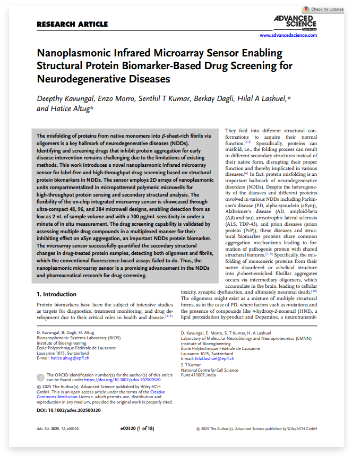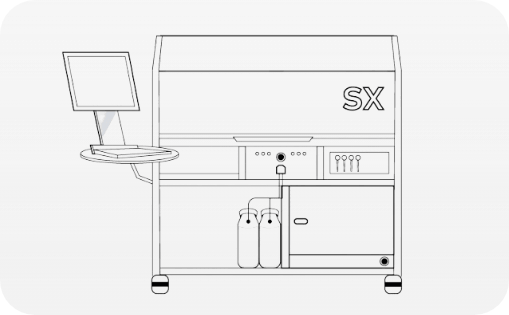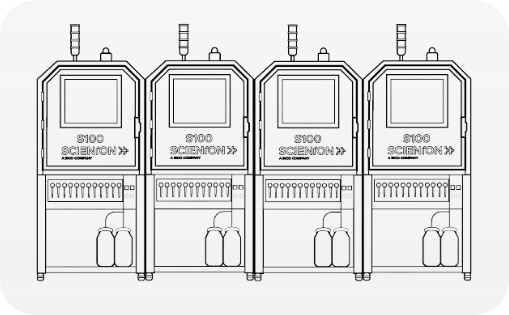sciFLEXARRAYER S3
Prototype with Confidence
Access high-end microdispensing technology without overcommitment. The sciFLEXARRAYER S3 is where focused R&D begins: compact, capable, and built for teams who want to prototype with the same precision technology used in advanced manufacturing at low-risk costs. In its Catalyst configuration, it offers full access to reliable picoliter and nanoliter dispensing, ready to support applications like biochips, microarrays, biosensors, or lateral-flow tests. Best of all, it’s built to grow with you: add modules, switch tools, or script your own workflows as your projects evolve. You don’t need to compromise now or re-invest later. Start right, and stay on track.
Trusted by leading institutions






Non-contact liquid dispensing

Ultra-high position precision

Ultra-high volume accuracy

Cost-efficient configuration

All liquids, including high viscosity

Minimal dead volume
Benefits
The S3 supports either picoliter or nanoliter dispensing with high precision. In picoliter mode, it dispenses 10–800 pL per drop with a coefficient of variation (CV) below 2%. In nanoliter mode, it can deliver 50–5000 nL per jet. This dual compatibility enables flexibility for a wide range of R&D applications, from high-density microarrays to low-volume spotting for bioassays.
The S3 supports up to 8 independent channels for picoliter dispensing and 4 channels in nanoliter mode, enabling parallel printing of multiple samples. It is compatible with liquids of all kinds, including high-viscosity and complex biomaterials. This flexibility makes it ideal for rapid prototyping, assay development, and small-batch production, all while maintaining precise, repeatable results.
With its compact footprint and basic but fully functional configuration, the S3 is a smart investment for labs seeking performance without overcommitment. It offers full sciFLEXARRAYER technology in a lean package, giving you access to non-contact precision dispensing, modular upgrades, and scalable capability from the start.
Every sciFLEXARRAYER model, incl. S3, shares the same foundation of ultra-high precision, minimal dead volume, and application flexibility. See here these shared core values.
Key Features
UP TO 8 DISPENSING CAPILLARIES WITH INDIVIDUAL CONTROLS
High precision and high speed XYZ spindle drives
Head camera for position control and QC of targets after spotting
UP to 36 STANDARD MICROSCOPE slides or 4 MTP PER RUN
TARGET DECK, WITH STANDARD, or VACCUUM TARGET HOLDER
PC CONTROL WITH FLEXIBE RUN AUTOMATION AND LIVE VISUAL CONTROL OF DROPLET STABILITY
Precision microdispensing applications
Microneedles
Dispensing vaccines, drugs, or diagnostics onto microneedle patches with high precision for minimally invasive delivery platforms.
lateral flow
Automating reagent spotting onto lateral flow assays with consistency and accuracy, from development to large-scale manufacturing
microarray & biosensors
Enabling multiplexed diagnostics with precise spotting of DNA, proteins, or other biomolecules on diverse surfaces.
microfluidics
Filling microchannels, chambers, and lab-on-chip systems with accuracy and repeatability for diagnostics and research workflows.
Case Study
PLASMONIC MICROARRAYS FOR NEURODEGENERATIVE RESEARCH WITH SCI FLEXARRAYER S3
The Challenge
Quantifying protein structural changes in drug screening.
EPFL researchers set out to create a labelfree method to study how drugs affect protein aggregation in neurodegenerative diseases. Conventional fluorescence and ThT assays could not reliably detect early aggregation states or mixed structural forms of αsynuclein, limiting insight into drug efficacy. The team needed a platform that combined high throughput screening with nanoscale structural precision.
The Solution
Automated nanoliter spotting for plasmonic IR microarrays
The Outcome
Accelerating label-free biomarker screening in neuroscience.
Nanoplasmonic Infrared Microarray Sensor Enabling Structural Protein Biomarker-Based Drug Screening for Neurodegenerative Diseases
Deepthy Kavungal, Enzo Morro, et al, Advanced Science, 2025.





